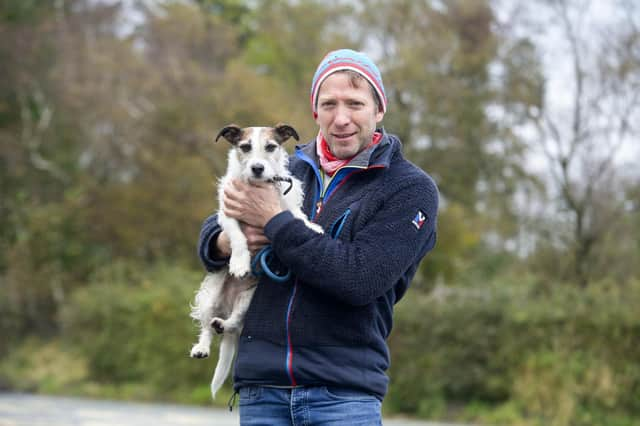Freezing weather makes outdoor veterinary work tough for The Yorkshire Vet, Julian Norton


Foggy, dark and damp days set in from around the middle of October in Thirsk, and from the end of November no one is totally surprised to see snow.
I used to do the annual pregnancy testing visit to a large suckler herd near Nether Silton every November. It was a wild job and took several days.
Advertisement
Hide AdAdvertisement
Hide AdWe would start work at about nine in the morning and finish whenever darkness fell. It took ages, because the cattle were out in the field and didn’t want to be captured and separated from their calves.
Once tested, they were ferried to one farm or another, depending on the outcome of the test. If we were lucky, the work would be done in two days and completed without any injuries or escapees.
We were also lucky if we didn’t get snow falling at some stage. If the wind came from the North, then it was a near certainty. The only part of my body that remained warm was my right arm.
Every few minutes it would be immersed in a rectum at just over 101 degrees Fahrenheit. It was like submerging it in a lovely warm bath.
Advertisement
Hide AdAdvertisement
Hide AdSadly, the same could not be said for my feet – wellies and frozen concrete are not a good combination. My left hand was not as fortunate as the right.
It grappled with the freezing cold metal workings of the cattle crush, sucking out any warmth. It was always hard work and, with heaters blasting and blowing at full power in the car on the way back to the practice, it was another challenge to stay awake, let alone survive evening surgery.
But it’s when December arrives that the coldness and snow can really hit.
In 2009, Arctic weather had the country in a polar grip and frozen weather continued from December through to February. It is the coldest and most prolonged cold spell I can remember in Yorkshire and it made outside veterinary and farming tasks very difficult.
Advertisement
Hide AdAdvertisement
Hide AdWater pipes froze and sheep, or any cattle unlucky enough to still be outside, needed huge amounts of extra food. Some routine vet work was cancelled as collecting areas had morphed into ice rinks. Cows, despite having four feet, are even worse on ice than humans.
“We’ll have to put off the blood tests. It’s far too slippery in our yard and I don’t want the cows slipping and injuring themselves,” was a common conversation.
Emergency work carried on regardless and calvings, lambings, cattle with pneumonia or prolapses or sheep with twin lamb disease became the job for vets who had 4x4s and winter tyres.
After one heavy snowfall, a farmer from Hawnby called to arrange a rendezvous with his snow plough, to clear the road to his farm ahead of the vet’nary.
Advertisement
Hide AdAdvertisement
Hide Ad“It’s always worse up here,” he said, confirming the extreme weather conditions at the top of Sutton Bank. If the wind comes from the north east, the drifts along the drover’s road can obliterate the stone walls and even the road signs. That winter, the piled snow persisted for months.
On another occasion, a colleague appeared back at the practice, ashen-faced after a visit to see a horse above Boltby Bank. It wasn’t the unruly yearling that had caused him trauma.
He was a diligent vet but a terrible driver and, foolishly, he’d decided to descend the steepest road within miles and lost control. As his Ford Escort went sliding down the bank, his only option was to save himself by aiming into a snow drift.